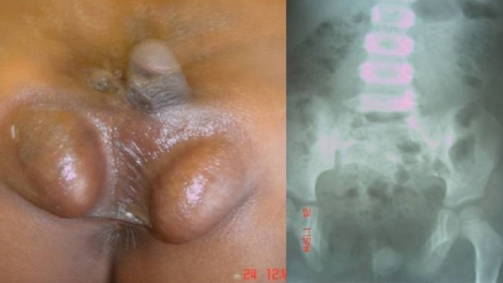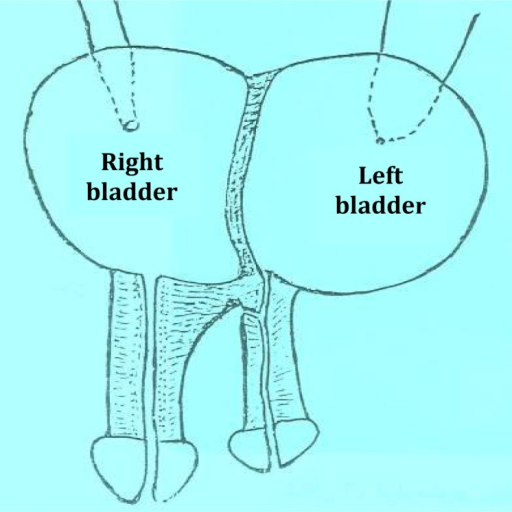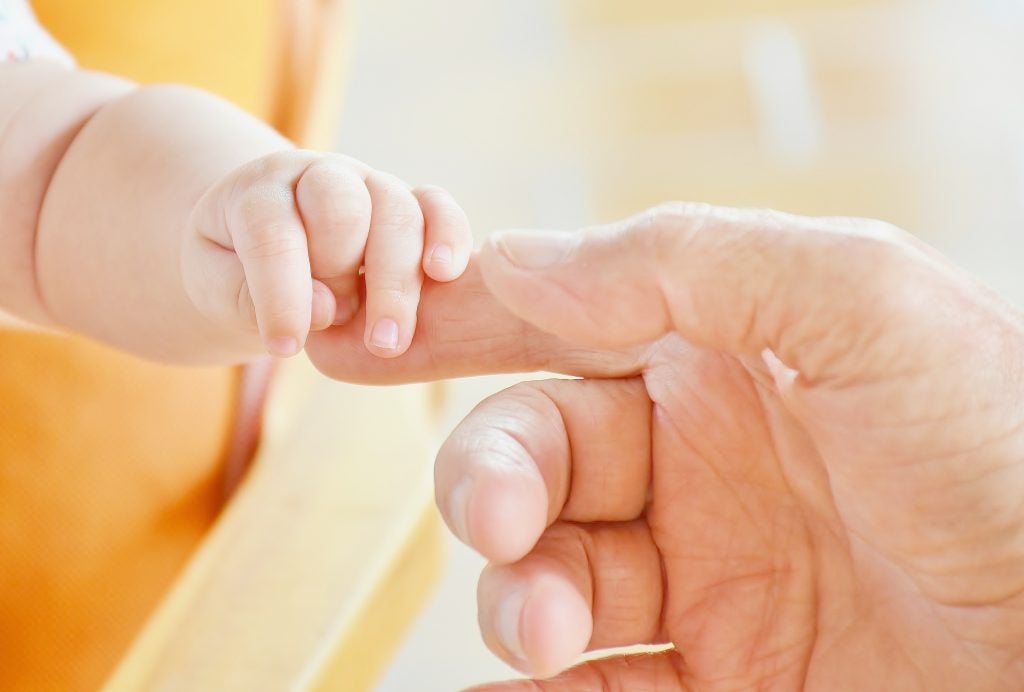
What is Diphallia
Diphallia (“Di” meaning two and “phallia” meaning penis) is a medical condition in which a male is born with two penises. This is an extremely rare disorder-only approximately 1000 cases of diphallia have been recorded since 1609. Diphallia occurs in one in 5.5 million males in the United States. It is a rare anomaly, and it is believed that no two cases are identical; the condition varies from a small accessory penis or duplication of the glans to complete penile duplication.1 Division of the penis may be frontal and symmetric, or asymmetric in shape and size.

Diphallia is usually associated with other malformations, such as bladder and urethra duplication, as well as abnormality of skeletal and heart muscles. In cases of diphallia, the urethra shows a range of variations, from a functioning “double urethra” to a complete absence of the urethra in each penis. Both penises may pass urine, by only one or through some other aperture in the perineum.3 The degree of erectile function in each case of diphallia varies significantly. Usually, one or both penises are capable of erection. In some cases, simultaneous erection and, occasionally, ejaculation have been reported.4
Living with Diphallia
Those who have diphallia tend to be sterile (unable to produce viable sperm for pregnancy) due to congenital defects. In most cases of diphallia, the two penises lay side by side and are of equal size; they can also be seated atop one another, with one distinctly larger than the other.1 Most men with diphallia learn to use one or both for intercourse, and some cases have been reported where penetration of two partners at the same time has occurred.4 This rare condition has been documented in pigs and other mammals as well.4
Diphallia is a natural medical condition and should not be confused with genital bisection, an elective procedure that involves the splitting of the penis. Diphallia is believed to take place during the embryonic development of the penis between the third and sixth of gestation.4 The treatment of diphallia typically involves the excision of the duplicated penis at birth; however, treatment depends entirely on the specific type of congenital abnormalities, as well as the desire to preserve continence (the ability to retain a bodily discharge voluntarily) and erectile function.

There have been many cases of diphallia in which males lead normal sexual lives, and are able to have penile-vaginal and/or penile-anal intercourse. Some diphallic males have fathered children with their female partners. Diphallia is not hereditary, and males born from fathers with the condition most often have normal genitalia at birth.2
References
- S. Acimi, “Complete diphallia,” Scandinavian Journal of Urology and Nephrology, vol. 38, no. 5, pp. 446–447, 2004.
- M. E. Torres, P. J. C. Sanchez, T. A. Aragon, T. V. Camacho, and G. A. Colorado, “Diphalia,” vol. 69, no. 1, pp. 32–35, 2009.
- M. C. de Oliveira, R. Ramires, J. Soares, A. P. Carvalho, and F. Marcelo, “Surgical treatment of penile duplication,” Journal of Pediatric Urology, vol. 6, no. 3, pp. 257-e1–257-e3, 2010.
- A.-R. Mirshemirani, N. Sadeghyian, L. Mohajerzadeh, H. Molayee, and P. Ghaffari, “Diphallus: report on six cases and review of the literature,” Iranian Journal of Pediatrics, vol. 20, no. 3, pp. 353–357, 2010.
Last Updated: 20 October 2014.
